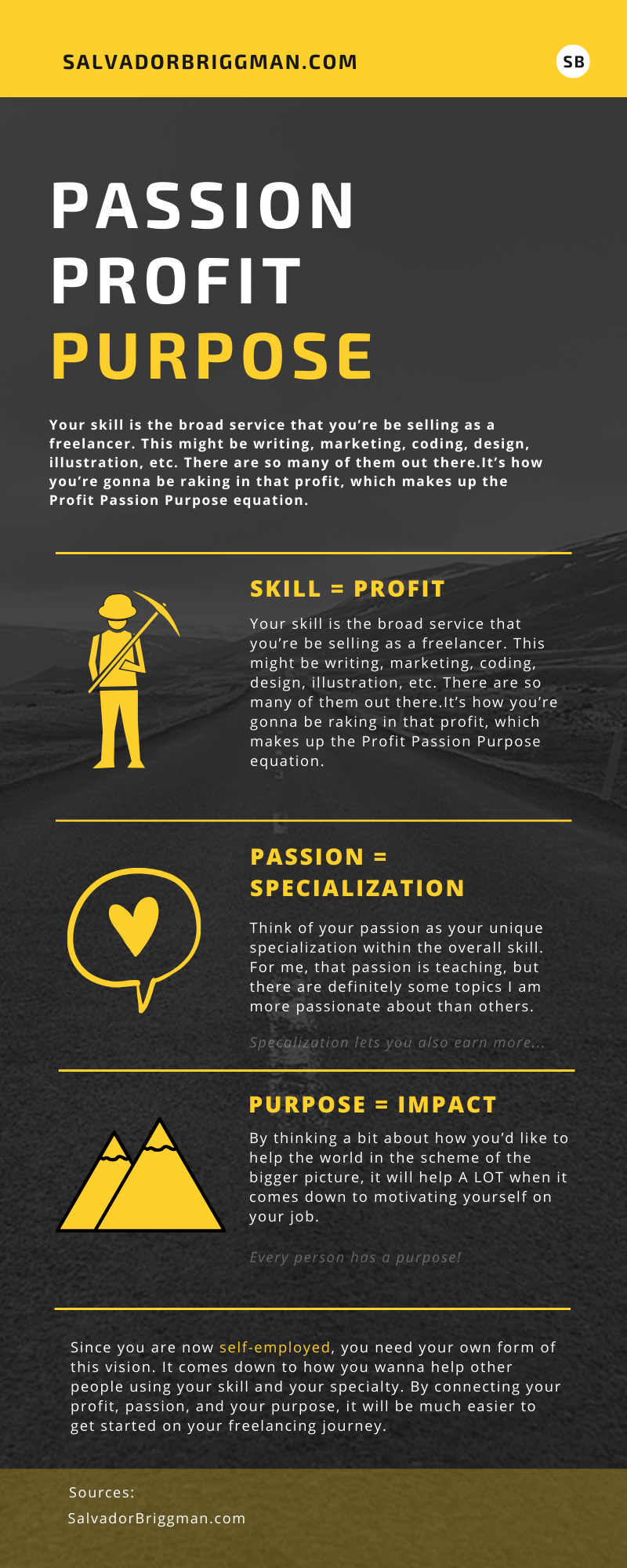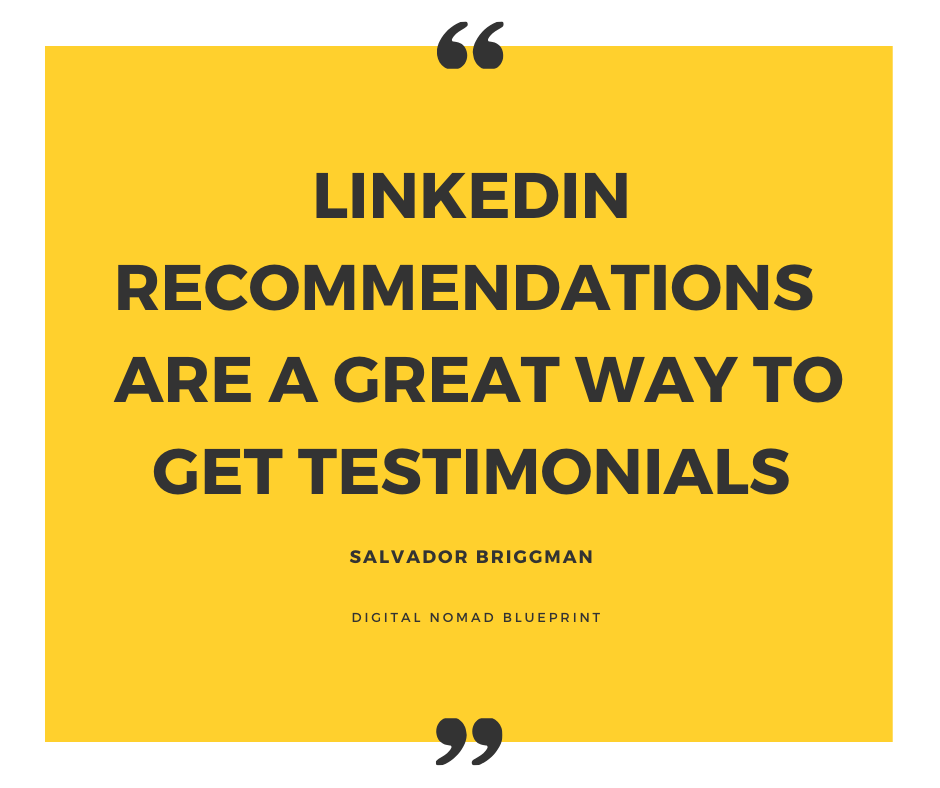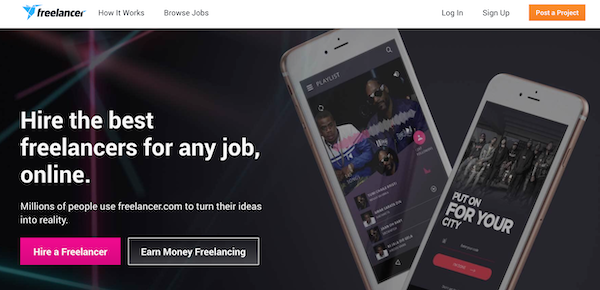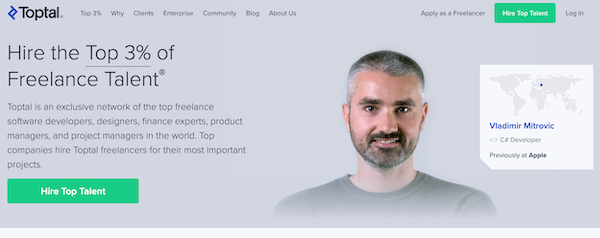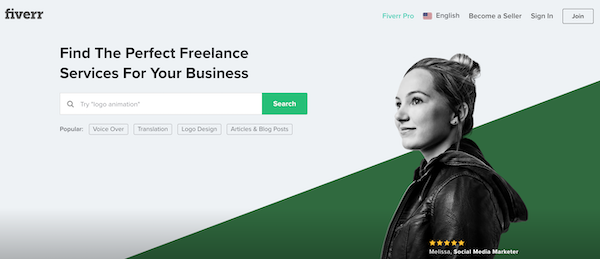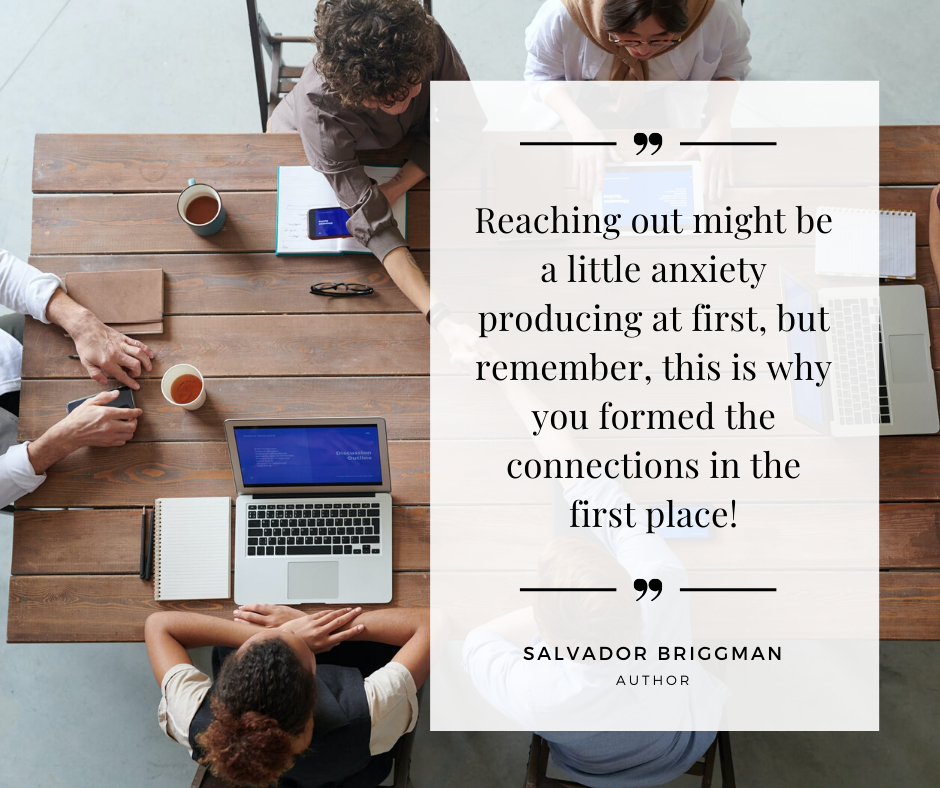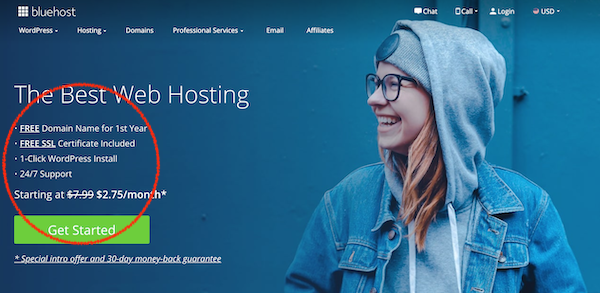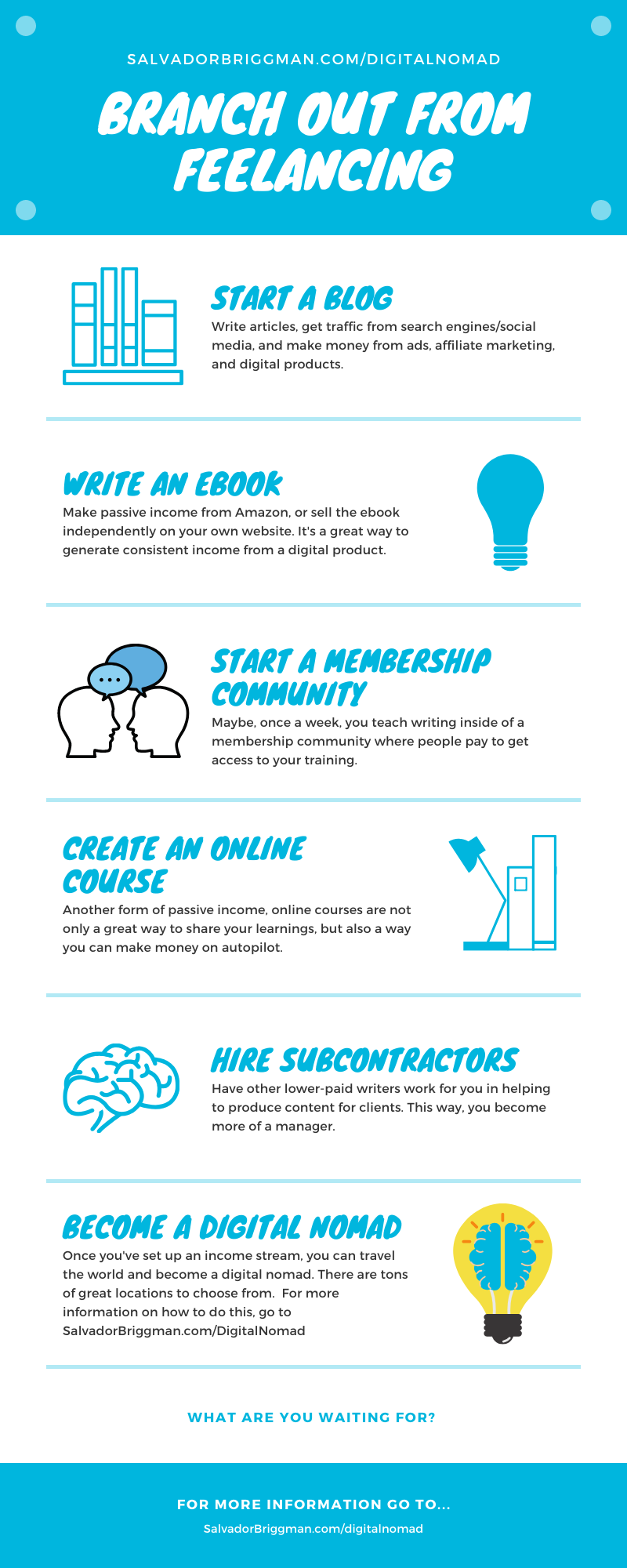Freelancing is one of the fastest ways to generate income online.
Anytime you’re selling a service, it’s easier for a buyer to make sense of what you’re offering.
This is why there are even specific websites out there dedicated to connecting business owners who need help with talented freelancers!
In my last article, I went over a few different types of jobs that you can have as a digital nomad. Now, I want to cover a step-by-step plan for actually becoming a freelancer.
I’ll walk you through what you’ll need to do every step of the way, along with key resources and websites that will speed up the entire process.
If you play your cards right, you can get set up in a matter of a week! Likely though, it will probably take you two or three to really get the ball rolling.
Let’s dive into it, so that you can one day spend your time chilling on the beach, enjoying a beautiful dinner in a city with ancient architecture, or discover a new country that you might like to call home.
1. How Freelancers (Actually) Earn Money Online
I know it might sound straightforward, but freelancers actually earn money a little differently than you may have at your previous job.
With your previous employer, all you had to do was sell one company one time in order to get a source of recurring monthly revenue. As long as you showed up for work every day and made sure to do a good job, you got that paycheck.
When it comes to freelancing, you are moving from job to job and client to client. Rather than having one boss, you likely will have multiple. Sometimes, that client will be paying you to work on a project over the course of a year. Other times, it might only be for a month.
This is an important distinction, because it means that you need to create a strong user profile (or work portfolio) that you can easily and quickly send new clients should they ever ask. We’ll get into that a little bit later.
As a beginning freelancer, you will likely be taking on lots of jobs to earn reviews and testimonials from your clients. This period is temporary for most types of jobs. Soon, you’ll progress into having a few steady clients.
2. Pick Your Profit, Passion, and Your Purpose
“Do not ignore your gift. Your gift is the thing you do the absolute BEST with the LEAST amount of effort.” – Steve Harvey
Your skill is the broad service that you’re be selling as a freelancer. This might be writing, marketing, coding, design, illustration, etc. There are so many of them out there.
It’s how you’re gonna be raking in that profit, which makes up the Profit Passion Purpose equation.
Your skill makes your Profit
The skill that you choose will determine your earning potential, but I would advise you to pick something that you’re already good at, or that you’d like to become better at.
If your skill relates to your current job, then it will be faster and easier to begin to earn money online. However, it’s not a requirement.
You might hate your existing job. You might despise what you have to do to earn for a living.
Sound familiar? Well, this an opportunity to begin an entirely new career. It’s a chance to explore some of the hidden talents that you might have.
Here are some common digital nomad freelancing skills:
- Writing
- IT/Coding/Programming
- Marketing
- Designers
- Content creators
- Virtual assistant
Your skill doesn’t have to fall into one of these categories. Remember, there are many. However, you should have a broad idea of the value that you’re bringing to a potential client.
Your specialization is your Passion
Now, your actual skill differs from your passion. Your passion relates more closely to the definitive application of your skill.
For example, my main skill when I was starting out was writing.
However, my passion was educating about crowdfunding. So, the way I used my skill was to write lots and lots of blog posts and books, which started my journey.
While writing might be your core skill, it can be used in many different ways. You could specialize in writing blog posts, ghostwriting ebooks, putting together marketing emails, or even writing sales pages using copywriting tactics.
Think of your passion as your unique specialization within the overall skill. For me, that passion is teaching, but there are definitely some topics I am more passionate about than others.
I’m a horrible writer when it comes to writing fiction stories, but I can breeze through writing nonfiction.
To begin to think about how you’d like to specialize, you could consider the format in which you’d like to use your skill (ex. coding apps vs websites) or the industry you want to target (coding financial websites? making ecommerce stores? setting up blogs?)
Your Purpose connects to your impact
Typically, you specialize your skill based on how you’d like to help other people.
I enjoy teaching, so I like seeing people learn things, apply them, and get results. I like breaking down complicated processes into easy-to-follow systems.
By thinking a bit about how you’d like to help the world in the scheme of the bigger picture, it will help A LOT when it comes down to motivating yourself on your job.
Think about it… your previous employer had a mission. Right?
Their company had or has values. They have things they believe in. Why is that?
It’s because when there is a mission or a desired impact the company wants to make, it’s much easier to motivate employees towards a shared vision.
Since you are now self-employed, you need your own form of this vision. It comes down to how you wanna help other people using your skill and your specialty.
3. Creating Your Credibility – A Work Portfolio
Let’s be honest. Degrees don’t really matter.
There! I said it!
Yes, of course, some employers will look at where you went to school. But, more often than not, they’re more interested in what you can do for them. So, they’ll look at your work history. They’ll ask you about the projects you’ve completed.
As a freelancer, your credibility comes in three forms:
- Your work history. What you’ve done for others. Your work portfolio
- Your testimonials and reviews. How much money you’ve earned on a platform.
- What you specifically say that you can do for an employer. This may be communicated with a cover letter or replying to a post. You’re promising some kind of result.
Communicating Your Work History
This goes without saying, but you should definitely put any relevant projects or jobs you’ve done on your freelancing profile. I’ll talk a bit about this profile and major freelancing marketplaces later on.
In addition, you should also have a section of your personal website that details some of the work you’ve done in the past, for which clients, and the results that you’ve gotten them.
Lastly, I would recommend putting together a folder that you can easily send clients should they ask for more details. This will vary from industry to industry, but they may want a sample of your work to see how good you are.
Collecting Your Testimonials and Reviews
Basically, these two items will form the “social proof” signals that a potential employer will be looking for when they stumble on your email or message. They want to know that they are making a good decision, so they’ll look at certain trust factors.
If you’re on a major freelancing marketplace, then they’ll be sure to examine the various reviews you’ve gotten on that platform. They may look at the specific reviews, or the aggregate rating that you’ve received.
For potential clients that you’re reaching out to, or that stumble on your website, they’ll want some assurances that if they decide to hire you and sign a contract, that you won’t quickly turn into a mistake.
One of the easiest ways to begin to get testimonials is to go on LinkedIn and start asking your previous bosses to leave a LinkedIn recommendation. Formally, you could also send previous bosses an email or a letter asking for a testimonial and explaning the reason.
The more testimonials and reviews that you have, the easier it is for a potential employer to say that it’s a “no-brainer” decision to hire you.
Direct Employer Communication
This isn’t done by a lot of freelancers.
Most freelancers will usually send some kind of boilerplate message to potential employers that’s not at all customized to the job.
When you respond to a job posting, or email a prospective client, this is a marketing opportunity for you to stand out above other freelancers!
Show them that you know what they’re looking for, how you’ve completed similar jobs in the past, and what you can DO for them if they hire you.
When someone replies to one of my job posting with a custom message, along with some ideas related to the job posting, it shows me they are already thinking critically and will be a go-getter if I hire them for the job.
Rather than relying on an employer to go through the work of looking through your work history or portfolio, you can draw their attention to a few bullet items, and specifically, how you can help them with the specific project.
It also shows that you care, which is always a positive trait.
4. Pricing Yourself
Pricing yourself correctly as a freelancer can make the difference between barely scraping by and being able to live the lifestyle of your dreams.
If you’re thinking of just taking your salary and dividing that number by the number of hours in a year… think again!
Let’s just say that you earn $50,000 per year. There are 52 weeks in a year and you work 40 hours per week, so you assume there are 2080 that you work per year.
You divide $50,000 by 2080 and get… $24 per hour. So that should be your hourly wage, right?
WRONG!
Let me explain why.
As an employee of a company, there are certain luxuries that you are afforded which we call employee benefits. These include:
- Paid sick days, vacation days, national holidays
- Health insurance. Dental/vision insurance.
- Retirement benefits
- Workplace perks (laptop, cell phone, wifi, office space, coffee etc)
- There are many others, but the ones above are the main ones.
When you’re a freelancer, you don’t get any of these, so you have to calculate them into your hourly rate if you want to be able to do things like: take sick days or take vacation days.
Step 1: Subtract Freelancing Costs From Your Salary ($50,000)
What are some of the common costs that come with being a freelancer?
Some include:
- Shared office space
- Website hosting
- Accounting/invoicing software
- Marketing tools
- New laptop
- Tax and accounting fees
- Other types of software
- Healthcare
- Self employment tax
Let’s assume that this all comes out to be about $12,000 per year.
$50,000 + $12,000 = $62,000
Step 2: Figure Out How Much Time Is Billable
This is a fancy way of saying, figure out how much time you spend actually doin’ work.
Assuming you work 40 hours per week, 50 days a year, that’s 2,080 hours.
If you take a standard 3-week vacation, which is 15 8-hour days, that’s 120 hours you gotta knock off your billable time.
If you take 7 US holidays, then that will be 7×8 or 56 hours you gotta knock off as well.
Finally, if you take 5 sick days, thats 5×8 = 40 hours you gotta knock off too.
So…. 2,080 – 120 – 56 – 40 = 1,864 billable hours per year you’ll be workin’
Step 3: Figure Out How Much You’ll ACTUALLY be working
I don’t know about you, but I don’t spend every waking hour serving a client.
Some of my time is spent marketing myself, getting new clients, doing emails, social media, etc.
Let’s assume that when you’re staring out, you’re spending 50% of your time “working on the business” and 50% of your time actually working for new clients.
As you progress, that might be closer to a 25% on the business and 75% on clients split. But for now, let’s just assume 50/50.
So… 1,864*.50 = 932 billable hours you’ll actually be working per year.
Step 4: Divide Your Target Salary by Calculated Hours
Now, we’ll go back to step 1 and take your calculated new salary, which is $62,000 and divide that by 932 hours.
We have concluded that to comfortable ease into the freelancing life, you’d need to charge $66.52/hour.
That might seem like a lot, but if you feel uncertain, you could go back into our little equation and change up some things.
For example… if you intend to work 75% of the time, and only spend 25% on business (or also work on weekends), this would allow you to decrease your hourly rate substantially.
In this case, you’d only have to make $44/hour to make a decent living.
As another example, if you decided that you weren’t going to take any vacation, sick days, or US holidays, then you could take those numbers out of the equation.
In this case, you’d only have to make $39/hour to make a decent living.
Step 5: Stick To Your Rate Strategy
You could decide to really hustle in your first year as a freelancer and not take off any sick days, holidays, or vacation days. You could also decide to work 7 days a week. These are all killer ways to make sure you charge an affordable rate, which means more clients.
However, after some period of time, you’ll become burnt out. Eventually, you need to have some type of a normal life.
By sticking to the model that I outlined above, you’ll ensure that your freelancing rate takes into account the lifestyle that you want to lead.
If you want to stick to your guns, maintain a good lifestyle, and not have to worry about working yourself to the bone, then command the rate that you think makes sense.
The good news is that when you’re traveling overseas to countries like these, then the standard of living will be much lower, so you won’t have to earn the same amount that you did back home.
5. Finding Work as a Freelancer
You’ve figured out your talent, passion, and your purpose. Now, it’s time to hunt down those initial jobs and gigs that are gonna bring cash in the door.
There are many practical strategies for finding good work opportunities online. I like to break them down into these specific categories:
- Freelancing websites: These are marketplaces where companies go to hire freelancers. They will put out a job posting that you can reply to, or browse the site and hire freelancers based off of their profile.
- Your personal network: The employers that you have had before may be willing to hire you on a freelancing basis. You also have many colleagues who may refer work to you. These are all the companies and connections you’ve touched in your professional life.
- Your marketing efforts: The active ways in which you are marketing your services to business owners you don’t know. This might include social media, thought leadership, direct emails, and more.
Each of these strategies can work to get you jobs initially and in the long run. They all have various benefits and drawbacks. I’m going to go through each of them and nail down exactly how you can use each to find more work.
Freelancing Websites to Find Freelancing Jobs
Let’s start with some of the websites out there that you can browse to find freelancing work. Each of these sites are very different depending on their fees, types of freelancers, and how the platform works. I’d take a little bit of time to look into each of them.
1. Upwork
Upwork is my favorite website out of this list. I hire a lot of my own freelancers off of them. The first step is to create an account on Upwork. It might seem straightforward, but remember, your account is basically like your resume.
It’s easy for you to find work, connect with employers, get paid, and everything happens through the website, so that you don’t have to deal directly with companies regarding invoices.
It’s very straightforward. The only downside is that you may deal with lots of competition from places like India, so make sure you have a good profile and tailored cover letter.
Pricing: “Upwork charges contractors a 20%, 10%, or 5% service fee depending on the total amount they’ve billed with a client.” On the employer’s side, there is a 3% processing fee on payments.
2. Freelancer
Freelancer is another main freelancing website that you can use to find jobs. You can list any career-related skills under the sun and get paid for your time. It’s easy to manage everything from their website.
As a member on Freelancer, you can create an account for free and you get up to 8 job bids per month. After that, you can decide to increase the job bids you have available to you.
Personally, I don’t use Freelancer to hire freelancers because their fee structure is kind of confusing, charges companies, and I haven’t seen as good quality as other sites.
Pricing: “The fee for fixed price projects is 10% or $5.00 USD, whichever is greater, and 10% for hourly projects.” “If you are subsequently hired to perform that Service, a 20% fee of the total service price is charged.”
3. Guru
Guru is a great site to find work under a variety of categories like writing & editing, design, programming, etc. It’s very easy to set up a profile, browse the marketplace, and apply to jobs.
This site isn’t as well known as some of the others, but it is a valuable weapon in your arsenal. You can also very easily browse jobs even if you don’t have a user account.
Guru charges fees to both employers and employees. For employers, it’s a 2.9% handling fee on the invoice value of your freelancer.
Pricing: “We charge a small job fee on the invoice value to the Freelancers. The job fee ranges from 5% to 9% depending on their membership level.” Employers can choose to cover this fee, split it, or have the freelancer bear it.
4. Toptal
This is a bit of a different kind of freelancing website. They make you go through an application process and make a $500 deposit to weed out people who aren’t serious.
They bill themselves as the place to find top talent, and thus will charge higher rates than other marketplaces in the industry. There is a bit more hand holding on the part of employers than other sites.
They charge a fixed hourly rate to employers depending on the job and no recruiting fee. I wish they would be a bit more transparent with how they earn money, but it seems like it’s the difference between what they charge employees and what they pay freelancers. That could be 50/50. The site doesn’t say unfortunately.
“Nontransparent fees/rates. They usually take 70% of what clients pay for your work. Banning from network when a developer becomes “inconvenient”. If you ask for a raise, they might ban you from the network. That’s how “you set your own rate””. – Source.
5. Fiverr
As an employer, Fiverr is my other favorite website aside from Upwork. As a Freelancer, it’s a very easy way to get started earning income online by selling your services. There is also now a new initiative, Fiverr Pro, which is for higher-end services.
It’s free to join the website and you can list many different types of services from the comfort of your home. You can also offer different versions of your service and charge from $5 – $995 (or more with Pro).
When you’re paid, the money is transferred immediately into your account, so it makes for less waiting time.
Pricing: “There is no subscription required or fees to list your services. You keep 80% of each transaction.”
Get Freelancing Gigs From Your Personal Network
Your own network is also a great source for freelancing jobs!
Remember, these are people who know you in some kind of professional capacity. These people have:
- Seen your work
- They have a sense of your character
- You’ve worked for them before.
Your Old Bosses
You can first start with your old bosses. As long as you’ve maintained a good relationship, they won’t have any issue with you emailing them to do a discovery call and see if you can add value to any of the projects at the company.
Talented and motivated workers are hard to find. Most companies will scoop them up when they can. If you demonstrate that you can add value to any ongoing projects, then this might be a quick win for you.
The only difficulty with this approach is that after the project is complete, you’ll have to continue to find ways to add value to the company. Most companies that pay staff regularly do so because they have their exclusive and undivided attention. As a freelancer, you’re a hired gun, so you will be working for many companies, not just them.
Your Colleagues
In addition, you can ping your colleagues to see what the environment is at their company when it comes to hiring. Sometimes, new verticals are expanding rapidly, and companies are hungry on the lookout for talent. Other times, a company isn’t doing any hiring. By finding this information out first, you can decide whether or not you should even float the idea of working in a freelance capacity.
This might be a little anxiety producing at first, but remember, this is why you formed the connections in the first place! So that you can help them out, and they can help you out. Otherwise, what’s the point? Unless you’re friends in the course of your normal life, your colleagues are there to strengthen your career.
I would recommend taking a personal approach through phone and in person meetings because often times, it’s hard to really get a full picture of how a “lead” is feeling from just email. They might tell you that there are many opportunities, but they are just saying that to be nice. You need to be able to judge from their body language and tone of voice.
Your Industry Connections
Lastly, your industry connections are an amazing source of leads when it comes to finding freelancing opportunities. These are different from your colleagues. They are comprised of:
- Clients of your previous employer
- Competitors to your previous employer
- Similar companies in the industry
You can tap into your industry connections, who may have also seen your performance at your previous job. If not, they will likely be aware of your skill set and what you can bring to the table. It’s a lot easier to get someone who already knows you and your value to consider you for a freelancing opportunity.
Find Freelancing Opportunities From Your Marketing Efforts
You can also find freelancing jobs by marketing your skills. There are many ways to go about doing this. You might not be used to marketing yourself, but it’s very common in the freelancing world.
When it comes to getting the word out about your skills, there are several key strategies:
- Thought leadership: Writing articles on LinkedIn or other major publications sharing your advice or expert opinion on key topics.
- Content marketing: Putting out blog articles, YouTube videos, or podcast episodes that are helpful and informational. They are aimed at your target market.
- Social media marketing: Growing business-focused social media accounts on Twitter, Facebook, or Instagram to promote your content, thought leadership pieces, or your overall brand.
- PR and public relations: Reaching out to podcasts and media publications to share your expertise on key issues. This can be a great way to improve your credibility, while also getting more clients.
I would recommend getting started with thought leadership. You can easily write articles on LinkedIn or medium to begin to share your expertise with the world.
You should also set up a website that can house your work. Wix has a really easy tool that allows you to do this. There are lots of beautiful templates to choose from, and they are all easy drag and drop sites.
One of the things that I like about Wix is that it’s very affordable, easy to use, and doesn’t require any coding knowledge.
6. Marketing Yourself as a Freelancer
In order to get better quality jobs, you have to be willing to market your freelancing services.
When it comes to your services, the first way that you’ll begin to market your services is by setting up an effective profile that clearly conveys what value you bring to business owners and clients.
Crafting the Perfect Profile
Your freelancing profile should not only show what you can do for others, but also underscore your trustworthiness, credibility, and provide a work history that will make you an enticing job candidate.
First of all, you’re going to want to narrow in on what services you are offering. What is your expertise. How can you help others. This should be crystal clear. Think about what a potential employer would want to read if they were hiring for a job.
All too often, I will come across freelancing profiles that are vague, or that focus on too many different skill sets. Unless you’re providing something like virtual assistant services, you don’t want to be a generalist. You want to be a specialist.
Most companies are pretty smart. If you list too many different skills, they may see you as a jack of all trades, but a master of none. You can’t be good at everything. I don’t want a to hire a programmer to maintain my website who also is focused on selling services as a writer, social media content creator, video editor, and audio producer. If they’re going to be working on my website, I want them to be super good at that job.
Mastering the Cover Letter
After you’ve put some work into your freelancing profile, then you’ll want to begin to think about the cover letter that you use to respond to various jobs that are listed on freelancing marketplaces.
This cover letter should be tailored for each job. You don’t want to paste the same generic text for each one. This will make it virtually impossible to stand out from the crowd of other freelancers who are trying to get the job.
One easy way to get someone’s attention is to prove that you read their posting. You can:
- Reiterate back what they are looking for. Ex. “I see you’re looking for ____. I have experience doing _____.”
- Diagnose their problem. Ex. “I took a look at your ______. It seems like ______. I can help with this because ____.”
- Draw their attention to your portfolio. Ex. “I was reading through ____ and I actually completed a very similar job called _______ if you look at my portfolio. It was a smash success. Would love to help you ______.”
- Inject emotion into your response. Ex. “You have amazing _____. I’m passionate about ____ and I’ve ______. I’d love to help on this. Reply if you have any questions. I completed a recent job that’s similar called _______.”
Many times, employers are receiving so many cover letters that your first task should simply be to get their attention. By injecting emotion, diagnosing their problem, or proving that you read their posting, you’re far more likely to get a reply than the cookie-cutter standard replies they typically get.
This will instantly snag their attention, because you seem like a real human being on the other side. You’ve taken the time to understand the job, which means that you will also be careful in understanding their instructions in the future. It shows thoughtfulness and critical thinking skills.
Setting up Your Marketing Engine
Your website is your home base.
It’s where anyone can go to find out more information about you. It adds tremendous legitimacy to your freelancing practice.
If you don’t plan to do any kind of “content marketing” where you write blog posts on your website and you only intend to use your website to house your portfolio and basic information, then I’d recommend setting up a Wix website.
It’s very easy to get started. Everything is drag and drop. There are lots of beautiful templates that you can choose from. You’ll have a professional-looking website for a fraction of the cost.
However, if you want to set up your own blog where you can share insights, thoughts, and educational content which will attract potential clients, then I gotta suggest that you look into Bluehost.
These guys are masters when it comes to helping you set up a blog using WordPress. You get a free domain name when you sign up, as well as a free SSL certificate (think security). Not to mention, they have 24/7 support. You can talk with real people!
WordPress is the backbone of most blogs. It’s a powerful and robust framework (that I also use) to set up a blog. Using WordPress, you’ll also be able to install useful plugins and other functionality to do things like accept online payments.
From this point on, anytime you share a bit of content that’s housed on your blog, visitors will come to your website and learn about your freelancing services. How cool is that?
It’s free marketing! You just have to write blog articles, share them, and you’ll get traffic. Then, people will be able to discover more about how you can help their business.
I find that this works really well in particular if you’re offering things like freelance writing services. It’s also great for promoting social media marketing services.
Soon, you won’t even have to write new blog article because you can share the old ones on social media, and keep getting recurring traffic to your blog. That traffic them translates into new clients for your business.
You’ll have so many that you won’t know what to do with them!
When you get to this point, you’ll be able to raise your rates, since you have more demand than you can handle. You’ll be making more money for your time before you know it.
7. Branching Out From Freelancing
Freelancing is a great way to start to earn some fast income online. After all, if you have a valuable skillset and can prove your worth, then it’s very easy to make sense of hiring you for a project.
That being said, in the long run, the career can be a little bit constraining, and here’s why.
As a freelancer, you’re selling your time for money.
You’re not building up an asset which can produce income.
You’re using your main asset, which is time, to earn income.
If you fall sick, your income will dry up.
If you have to take care of a loved one and can’t work, then you won’t get paid.
If you max out your time with lots of clients, you hit your earning limit.
So, what can you do?
Thankfully, other freelancers have already answered that question!
Let’s take an example. Let’s say that you do freelance writing services.
Most of your time throughout the week is spent writing articles for your clients, but on the weekends, you work on you own projects. You do things like:
- Start a blog: Write articles, get traffic from search engines/social media, and make money from ads, affiliate marketing, and digital products.
- Write an ebook: Make passive income from Amazon, or sell the ebook independently on your own website.
- Teach inside a membership community: Maybe, once a week, you teach writing inside of a membership community where people pay to get access to your training.
- Create an online course: Another form of passive income, online courses are not only a great way to share your learnings, but also a way you can make money on autopilot.
- Hire sub-contractors: Have other lower-paid writers work for you in helping to produce content for clients. This way, you become more of a manager.
When you take ANY of these steps, you begin to transition from simply offering freelancing services to stepping into the role of a business owner.
Branching out as a freelancer does require you to learn new skills and take on more responsibility, but there is also tremendous upside. Now, if you were to fall ill, you will still be making passive income from your digital products, advertising, affiliate marketing, and other revenue streams.
Think of it as a failsafe, so that you don’t always have to depend on working yourself to the bone just to make ends meet. You can step up, become a business owner, and embrace leadership.
I was talking about this concept with one of my blogging students and relaying a story back from the early days of my career.
I was 23 years old and while I was determined to work hard to earn money, it just felt like there was never enough of it. Every day, I would boot up my laptop and get to work. My bank account was starting to go up, but for some reason, it didn’t feel like I was making any real progress.
At the end of the year, I looked at my bank account. The interest income was measly, at best, and the income I was generating from my investments in the stock market were barely enough to cover my apartment’s utilities.
I could spend years and years saving up $100,000, and still, based on a good 10% return, still only generate $10,000 in passive income from my portfolio.
YUCK!
Then, I realized something. Based the income I was generating from affiliate marketing and advertising, I was poised to make more than $10,000 that year in passive income.
It didn’t make sense to me.
I could spend 10 years saving $100,000…. which would earn $10,000 per year in passive income.
Or, I could spend 1 year writing articles on my blog… which would earn more than $10,000 in passive income.
WHAT!?!?
Haha, it was like a lightbulb moment went off in my head.
Why was I focused on just squirreling away money? I should be focused on building more passive income streams!
And, that’s exactly what I did.
I still continue to build passive income streams to this day.
As the years go by, the amount of time that I need to trade for money goes down, and my passive income streams go up.
I talk a ton about this in the Digital Nomad Blueprint. Basically, it’s what allows many of the digital nomads that you might know to travel the world, without having to break their backs working every second of every day.
Instead, they can go to Bali and actually relax!
They can visit an ancient Cambodian temple, without feeling like they’re losing money in the process.
Believe it or not, but you can actually save money while you travel. You just need to go about it the right way.
I won’t lie to you though. This transition does take work. You must be hungry, and be willing to become something greater. To get started as a freelancer, I recommend checking out some of the website and resources that I mentioned above. However, keep this idea in the back of your mind of becoming a business owner.
For more information about how you can blend freelancing with becoming a digital nomad, go and check out some of the other articles that I got out there on this website. They’re chocked full of useful tidbits, pieces of advice, and resources that will introduce you to the digital nomad lifestyle.
In my travels around the world, I’ve come across so many freelancers with different verticals, skill sets, and passions. There’s no reason why you can’t join the ranks. I’d go so far as to say that this is the best time to become a freelancer! You have everything at your disposal. Take action, get started today, and you’ll thank me that you did.
If nothing else, you will learn a lot, grow a ton, and come to realize that you can earn money anywhere – all that you need is a laptop and of course, a good internet connection. Also, a nice cocktail or a strong cup of coffee doesn’t hurt either ;).



